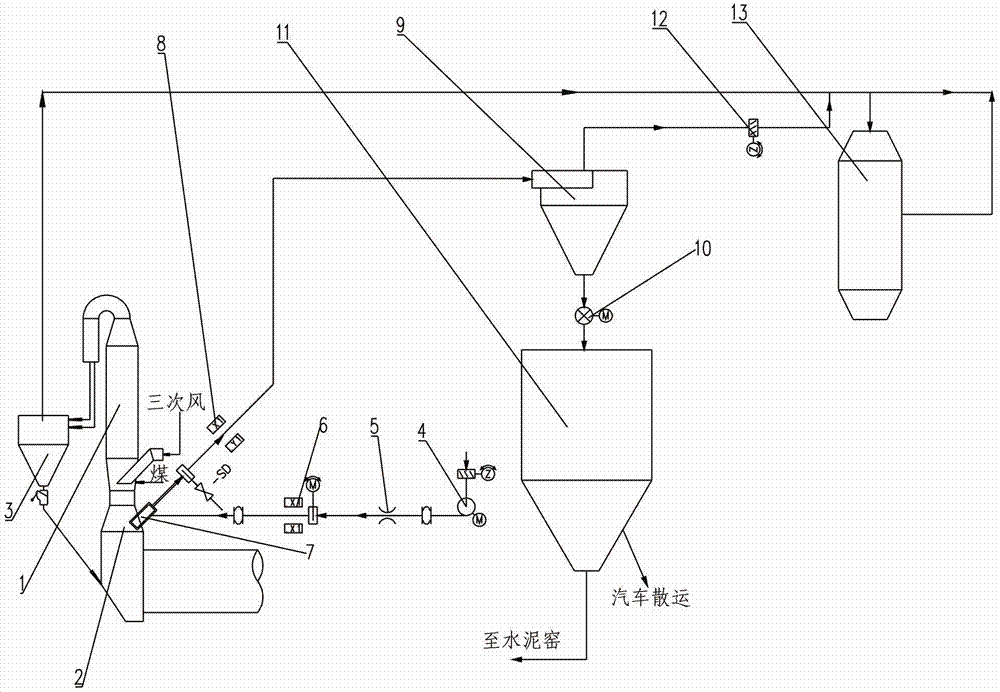Bypass process and system for cement kiln
A bypass ventilation and cement kiln technology, which is applied in the field of bypass ventilation system, can solve problems such as the influence of waste heat boiler operation at the kiln tail, the increase of heat consumption and material consumption in cement production and operation costs, and the increase in equipment and civil engineering investment costs, etc.
- Summary
- Abstract
- Description
- Claims
- Application Information
AI Technical Summary
Problems solved by technology
Method used
Image
Examples
Embodiment Construction
[0017] In order to better understand the present invention, the present invention will be further described below in conjunction with the accompanying drawings and embodiments.
[0018] Such as figure 1 Shown is the flow chart of cement kiln bypass ventilation process and system. The main body of the cement kiln bypass ventilation system is connected with the calciner 1 and the kiln tail smoke chamber 2 at the bottom of the calciner 1 respectively, and the main body of the calciner 1 is connected with the kiln tail smoke chamber 2 at the bottom; The multi-stage cyclone tube 3 of the heater is connected, the kiln tail smoke chamber 2 is provided with a bypass flue gas channel, and the bypass flue gas channel is connected to the cyclone separation device 9 through the mixing chamber 7; the gas outlet of the cyclone separation device 9 is connected to the kiln tail waste heat boiler 13 ; The dust outlet of the cyclone separation device 9 is connected to the bypass ash bin 11 . ...
PUM
 Login to View More
Login to View More Abstract
Description
Claims
Application Information
 Login to View More
Login to View More - R&D
- Intellectual Property
- Life Sciences
- Materials
- Tech Scout
- Unparalleled Data Quality
- Higher Quality Content
- 60% Fewer Hallucinations
Browse by: Latest US Patents, China's latest patents, Technical Efficacy Thesaurus, Application Domain, Technology Topic, Popular Technical Reports.
© 2025 PatSnap. All rights reserved.Legal|Privacy policy|Modern Slavery Act Transparency Statement|Sitemap|About US| Contact US: help@patsnap.com

